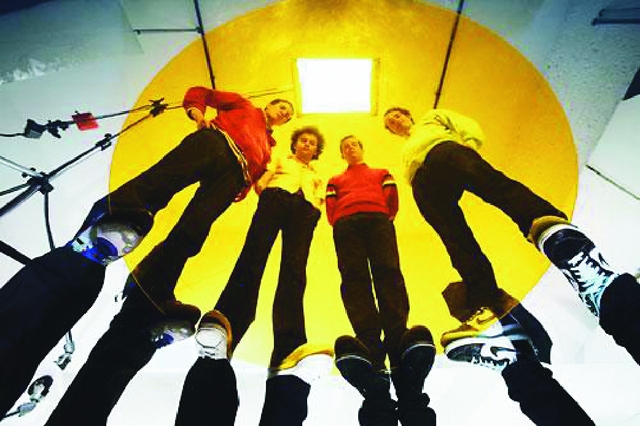Battles‘ first full-length album, Mirrored , is a good ride. Dozens of tiny moving parts engage as a motor that runs a little too hot but always manages to glide. "It sounds really chaotic and intense," says guitarist, singer and keyboardist Tyondai Braxton. "But really it’s way simpler than that."Loops link to loops, sound effects coat and disguise surprisingly usual rock-band instruments. The New York City-based machine boasts a fine collection of cogs. Braxton is the son of jazz musician Anthony Braxton. Drummer John Stanier hails from Helmet, known in the early ’90s for producing thinking-man’s metal. Ian Williams played guitar for Don Caballero, an acclaimed instrumental math-rock group from Pittsburgh. Dave Konopka manned the guitar for prog-metal Lynx.Battles members have been known to reject their superband origins in interviews. Nonetheless, they’ve managed to birth what’s being heralded as the "new prog." Still, Braxton says, things haven’t always been so well-tuned. Did you guys click as musicians right away? Absolutely not. Not at all. It took a long time to find common ground. Right off the bat, we noticed that, musically speaking, we had something interesting there for sure. But as far as everyone’s direction and where everyone wanted to go, it really took some compromise and some restraint on everybody’s part to find what the origin of the sound was. It absolutely did not jell at first. How were you able to stick out that tough period? It’s a miraculous thing, especially for people who have been in the game for awhile. This isn’t a hobby for anyone. How do you keep your ego in check—and submit to the grander scheme of how great this music could be—while having your integrity remain intact, while being personally fulfilled by what you’re doing musically? How do you find that balance? It’s hard. It was not an easy path. It was not just some, "Oh, let me call my buddies and we’ll jam on some stuff." It took a long time for us to find our way. Tell me about that crazy mirror room that you’re in for all your press photos, in the video and that’s on the cover of your album. The band built it, actually. Dave, the bass-player/guitarist, his concept was the whole mirrored reflection thing for this record. The whole band, we planned it out and schemed it out and then built the thing at this sound stage. We shot our video in the mirror cube. Musically, did you set out to make something really different or did you just arrive there? All of us are fearless in trying to find new things that are interesting. We were consciously trying to push ourselves to get to a place where we haven’t been. We don’t know a record is finished until it’s mastered, and then we get to listen back and be like, "Oh, wow. So that’s what we’re doing now." It makes it more fun. Is it risky to be more instrumental or experimental? Not at all. I wouldn’t want to do something I don’t like. In a way, it’s a weird question to answer. This is the thing that I like to do. Would I do something I wouldn’t like with the hope that someone will like it more? But why would I do that if I don’t like it?
Hear the many moving parts of Battles with Marnie Stern and Ponytail on Wednesday, June 27, at the Launchpad. $8 tickets are available at virtuous.com.

